
Beer is a relatively small lunar impact crater located on the Mare Imbrium, to the east of the crater Timocharis. It was named after German astronomer Wilhelm W. Beer. Just to the northwest is the matching twin Feuillée.

Bessarion is a lunar impact crater located near the southwest edge of Mare Imbrium. It is named after Greek scholar Bessarion. Some distance to the east is the crater T. Mayer. Bessarion is a bowl-shaped crater with a low central rise and a higher albedo than the maria, making it a brighter feature when the sun is overhead.
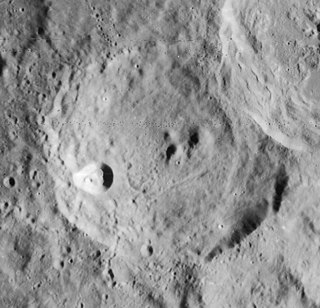
Cyrillus is a lunar impact crater located on the northwest edge of Mare Nectaris. Intruding into the northeast rim is the slightly larger, and younger crater Theophilus. To the south is another prominent crater named Catharina. Together these three craters form a prominent trio in the southeast quadrant of the Moon. To the northwest is Ibn-Rushd. Cyrillus is named after Saint Cyril of Alexandria, a 5th-century Patriarch and theologian.

Moltke is a lunar impact crater near the southern edge of the Mare Tranquillitatis. It is a small, bowl-shaped crater surrounded by a bright halo of higher-albedo material. Just to the south lies the rille system named Rimae Hypatia. These follow a course running roughly east-southeast to west-northwest, and have a length of approximately 180 kilometers.
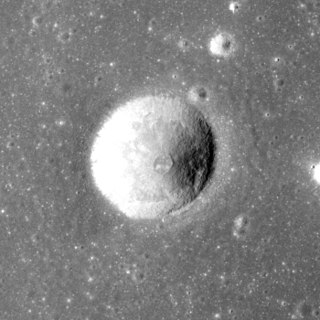
Borel is a tiny lunar impact crater located in the southeast part of Mare Serenitatis. It was named after French mathematician Émile Borel. To the northeast is the crater Le Monnier and to the southeast is the crater Abetti. Borel was previously identified as Le Monnier C.

Censorinus is a 3.8 km lunar impact crater located on a rise to the southeast of the Mare Tranquillitatis. It is named after the ancient Roman writer Censorinus. To the northeast is the crater Maskelyne.
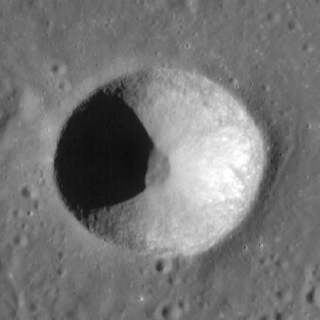
Biot is a small, bowl-shaped lunar impact crater located in the southern reaches of the Mare Fecunditatis. It is named after French astronomer Jean-Baptiste Biot."Biot (crater)". Gazetteer of Planetary Nomenclature. USGS Astrogeology Research Program. It is a circular formation with a sharp-edged rim that has not been significantly worn. The inner walls slope down to a relatively small interior floor. The albedo of the wide inner walls is higher than the surrounding lunar mare, giving it a light hue. To the southeast is the crater Wrottesley.

Aratus is a small lunar impact crater located on the highland to the south and east of the rugged Montes Apenninus range. It is a circular, cup-shaped crater with a relatively high albedo. It was named after Greek astronomer Aratus of Soli. To the east is the Mare Serenitatis, and to the southwest is the somewhat larger crater Conon. North-northeast of Aratus is the landing site of the Apollo 15 mission, just beyond Mons Hadley Delta.
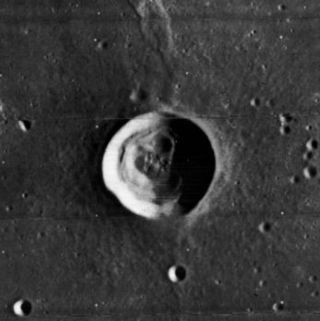
C. Herschel is a small lunar impact crater that lies on the western part of Mare Imbrium. It is named after German astronomer Caroline Herschel. It is a circular, bowl-shaped formation that has not undergone significant erosion. The interior floor has the same low albedo as the surrounding lunar mare. To the south-southwest is the similar crater Heis. C. Herschel lies on a wrinkle ridge of the lunar mare named the Dorsum Heim.

Clerke is a tiny lunar impact crater named after Irish astronomer Agnes Mary Clerke, who played a role in bringing astronomy and astrophysics to the public in Victorian England. It is located near the eastern edge of Mare Serenitatis in the midst of a rille system named the Rimae Littrow after the crater Littrow to the east. It is roughly circular and cup-shaped, with a relatively high albedo. In a valley to the southeast is the landing site of the Apollo 17 mission. Clerke was previously designated Littrow B.

Chladni is a small lunar impact crater that lies near the northwest edge of Sinus Medii, in the central part of the Moon. The crater is named for German physicist and musician Ernst Chladni who, in 1794, wrote the first book on meteorites. The rim of the crater is roughly circular, and there is a small central floor at the midpoint of the sloping inner walls. This feature has a higher albedo than the surrounding terrain. It is connected by a low ridge to the rim of the crater Murchison, which lies to the northwest. Due east of Chladni is the larger Triesnecker.

Descartes is a heavily worn lunar impact crater that is located in the rugged south-central highlands of the Moon. To the southwest is the crater Abulfeda. It is named after the French philosopher, mathematician and physicist René Descartes.

Hercules is a prominent crater located in the northeast part of the Moon, to the west of the crater Atlas. It lies along the east edge of a southward extension in the Mare Frigoris. To the west across the mare is Bürg. To the south is the ruined crater Williams.

Anděl is a lunar impact crater that lies in the rugged central highlands of the Moon. It was named after the Czech astronomer Karel Anděl. Nearby craters of note include Abulfeda to the south-southeast and Descartes to the east-southeast. About 85 kilometres to the east-northeast of the outer rim is the landing site of the Apollo 16 mission.
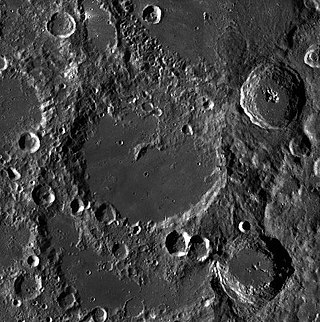
Von Kármán is a large lunar impact crater that is located in the southern hemisphere on the far side of the Moon. The crater is about 186 km (116 mi) in diameter and lies within an immense impact crater known as the South Pole–Aitken basin of roughly 2,500 km (1,600 mi) in diameter and 13 km (8.1 mi) deep. Von Kármán is the site of the first soft-landing on the lunar far side by the Chinese Chang'e 4 spacecraft on 3 January 2019.
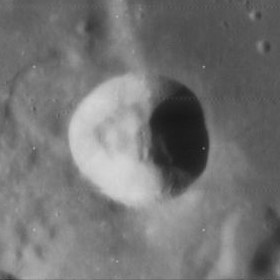
Bellot is a small lunar impact crater that is located on the southwest edge of Mare Fecunditatis. It lies between the craters Goclenius to the northwest and Crozier to the southeast. To the southwest is Colombo, and to the west is Magelhaens.

Banachiewicz is a largely degraded lunar impact crater that is located near the eastern limb of the Moon.
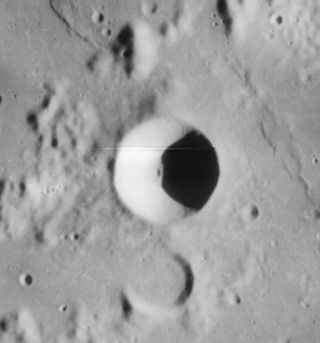
Darney is a small lunar impact crater that is located on the region of the Moon where the Mare Nubium joins the Oceanus Procellarum. It was named after French astronomer Maurice Darney. To the south is the lava-flooded crater Lubiniezky. The southern rim of Darney is attached to a series of low ridges that extend to the southwest.

Kopff is a lunar impact crater that lies along the eastern edge of the inner Mare Orientale impact basin, on the western limb of the Moon. In this position the crater is seen from on edge from the Earth, and its visibility is affected by libration. This situation makes it difficult to discern much detail about the crater unless it is viewed from orbit.

Hakuto-R Mission 1 was a failed private Japanese uncrewed lunar landing mission built and operated by ispace, which was launched in December 2022 for an attempted lunar landing in April 2023.

























